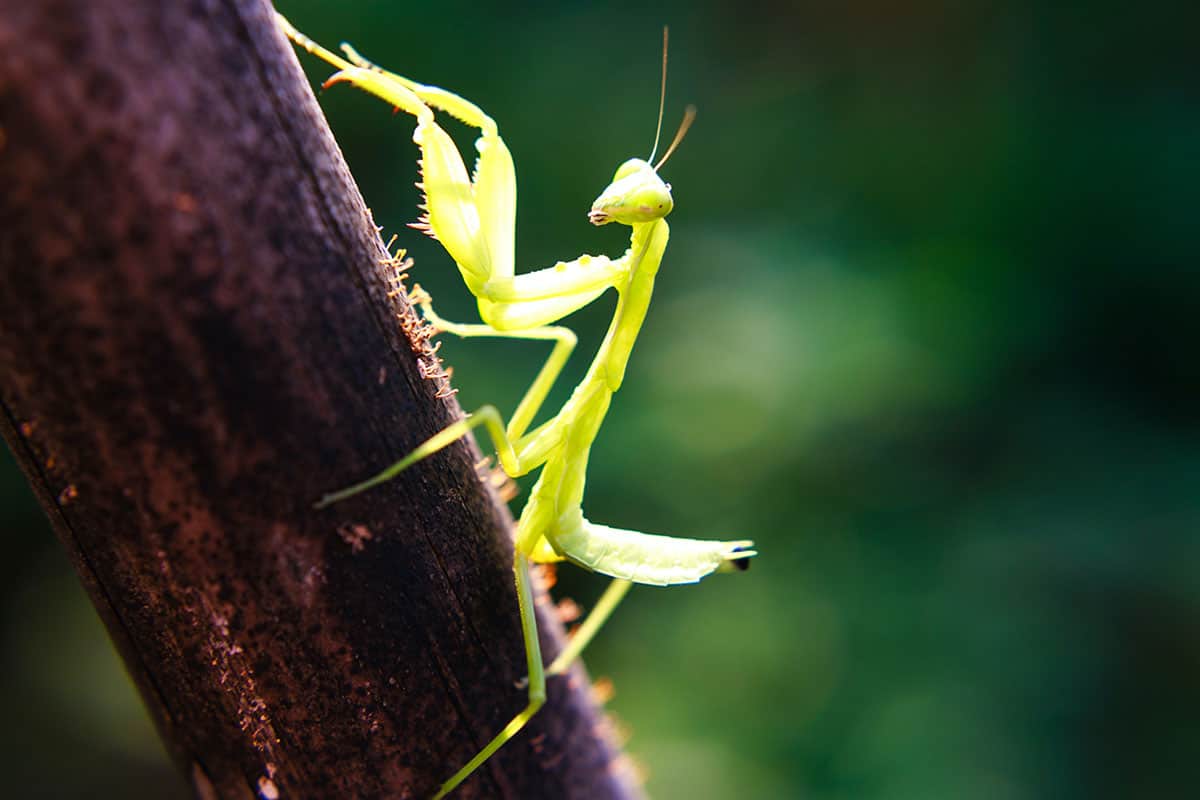VIDEO: Praying mantises are big guns in battle against pests at Hamilton garden centre
Published September 1, 2020 at 7:44 pm

Winona Gardens shared a creepy, crawly video on Tuesday (September 1) and it begs the question: why would anyone do this?
Winona Gardens shared a creepy, crawly video on Tuesday (September 1) and it begs the question: why would anyone do this?
Well, turns out, there’s a pretty good reason for releasing hundreds of praying mantises on one’s property even though the prospect, for many, might be terrifying.
“A praying mantis is a predatory insect and they eat anything smaller than itself,” explained Jeff Beattie, owner of Winona Gardens Garden centre and the proud praying mantis papa in the video.
“They help reduce the number of bad bugs that can do damage to your garden.”
So what bugs warrant such a gruesome fate?
Ticks, mosquitoes, gnats, thrifts and, one of the biggest plant pests: aphids.
“These insects can rob the juices of a plant and cause it to become severely dehydrated and deformed,” Beattie explained to InTheHammer.
The Winona Gardens team started using praying mantises about three years ago as a natural alternative to using pesticides.
Beattie said they’ve also started releasing large populations of ladybugs onto their nearly 2.5-acre property to help with aphid-control.
“We’ve seen a huge reduction in our aphid population,” he said.
It’s been so effective, that they sell the praying mantis nests and the containers, like that seen in the video, in their store for customers who want to reap the benefits of these natural-born pest killers.
“Sometimes it takes a week, sometimes it takes two weeks,” Beattie said of the nests’ incubation period. “Then they all hatch at once. You have to release them right away because they will start eating each other.”
Beattie said beyond the obvious benefits of having the praying mantises around, he said they’re incredibly fascinating creatures to observe.
“You never know how many you’re going to get in a nest,” he said. “We’re starting to notice that the families are staying around the areas they’re released and setting up their own nests.”
For those concerned about the impacts the praying mantises might have on our pollinator friends, Beattie says it’s not a problem.
“We have a healthy population of pollinators,” he said. “They [praying mantises] only like to go after the easy prey.”
Humans are also not on the praying mantis radar, in case any readers were worried.
For more information on Winona Gardens and their insect population, follow them on Facebook.
insauga's Editorial Standards and Policies advertising





